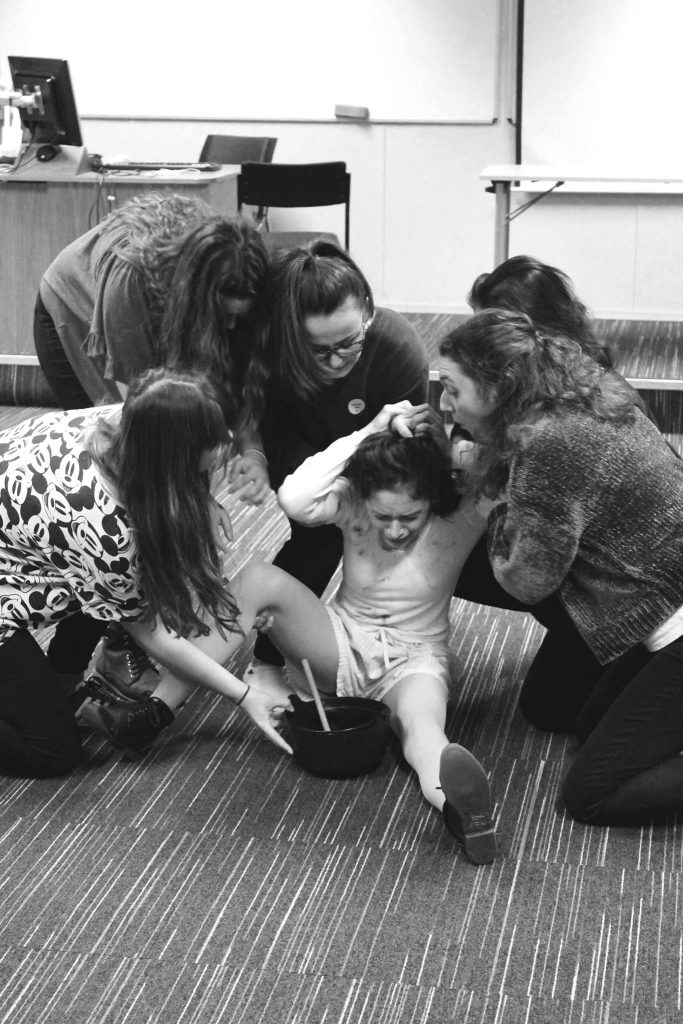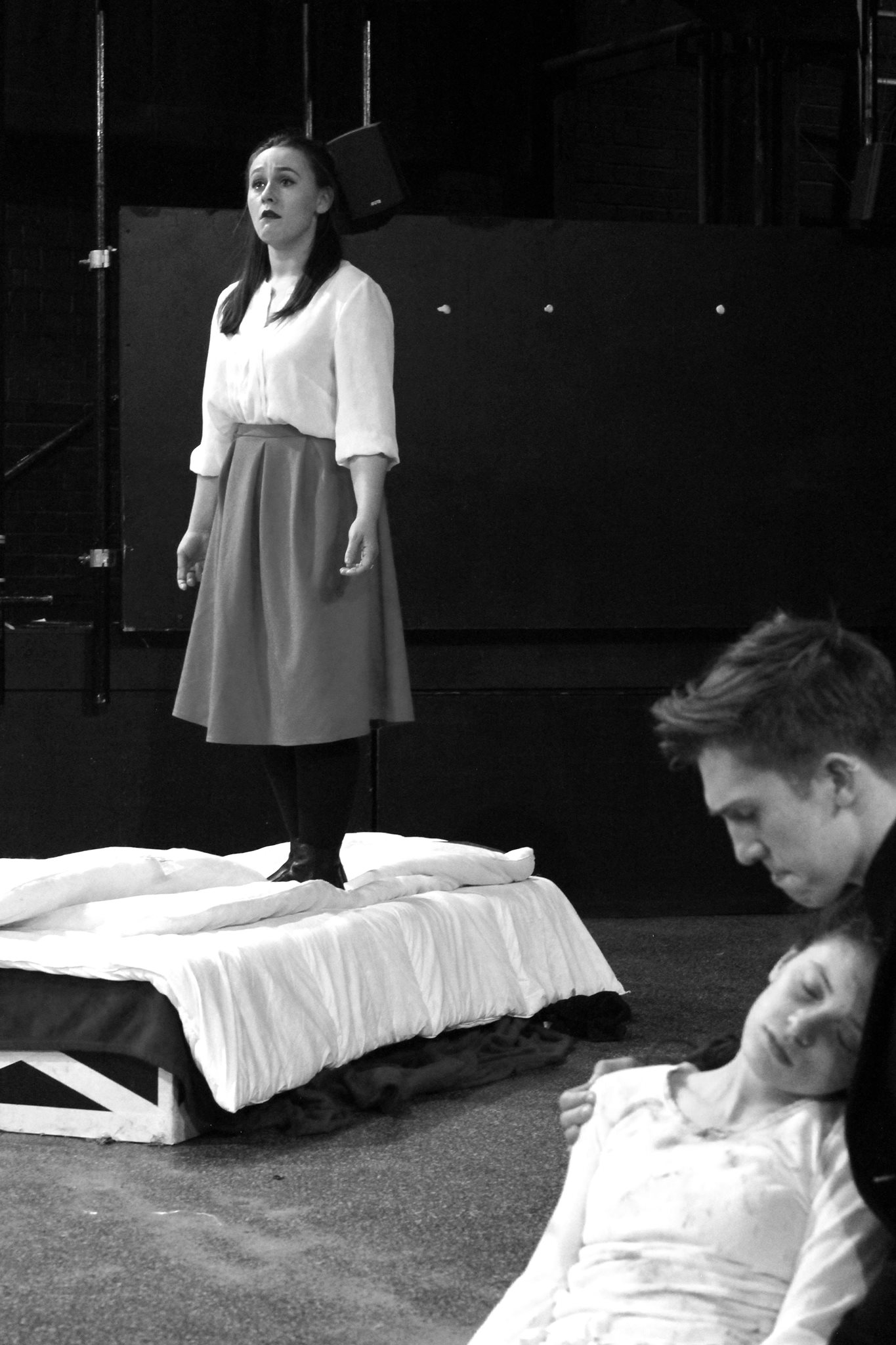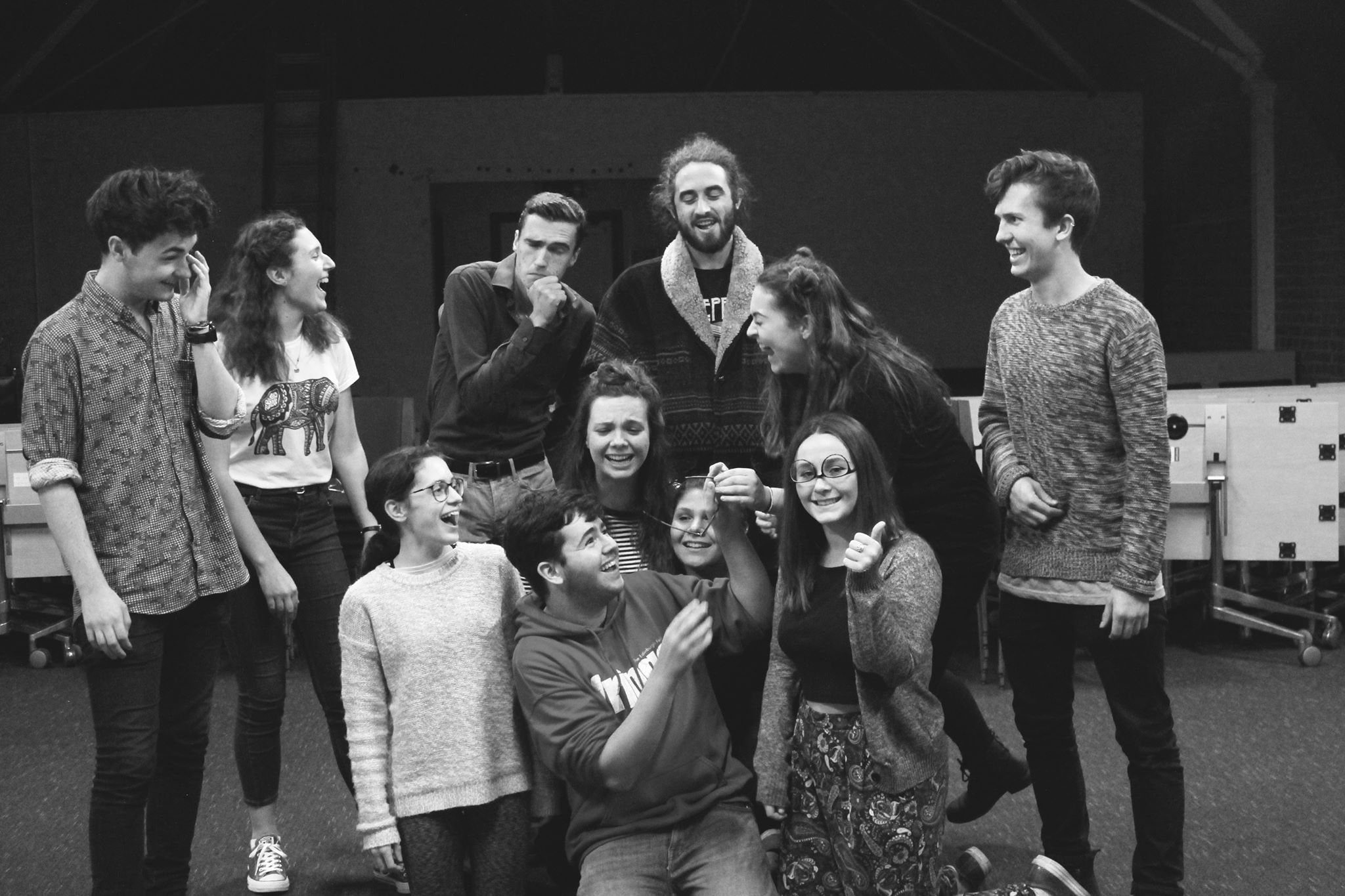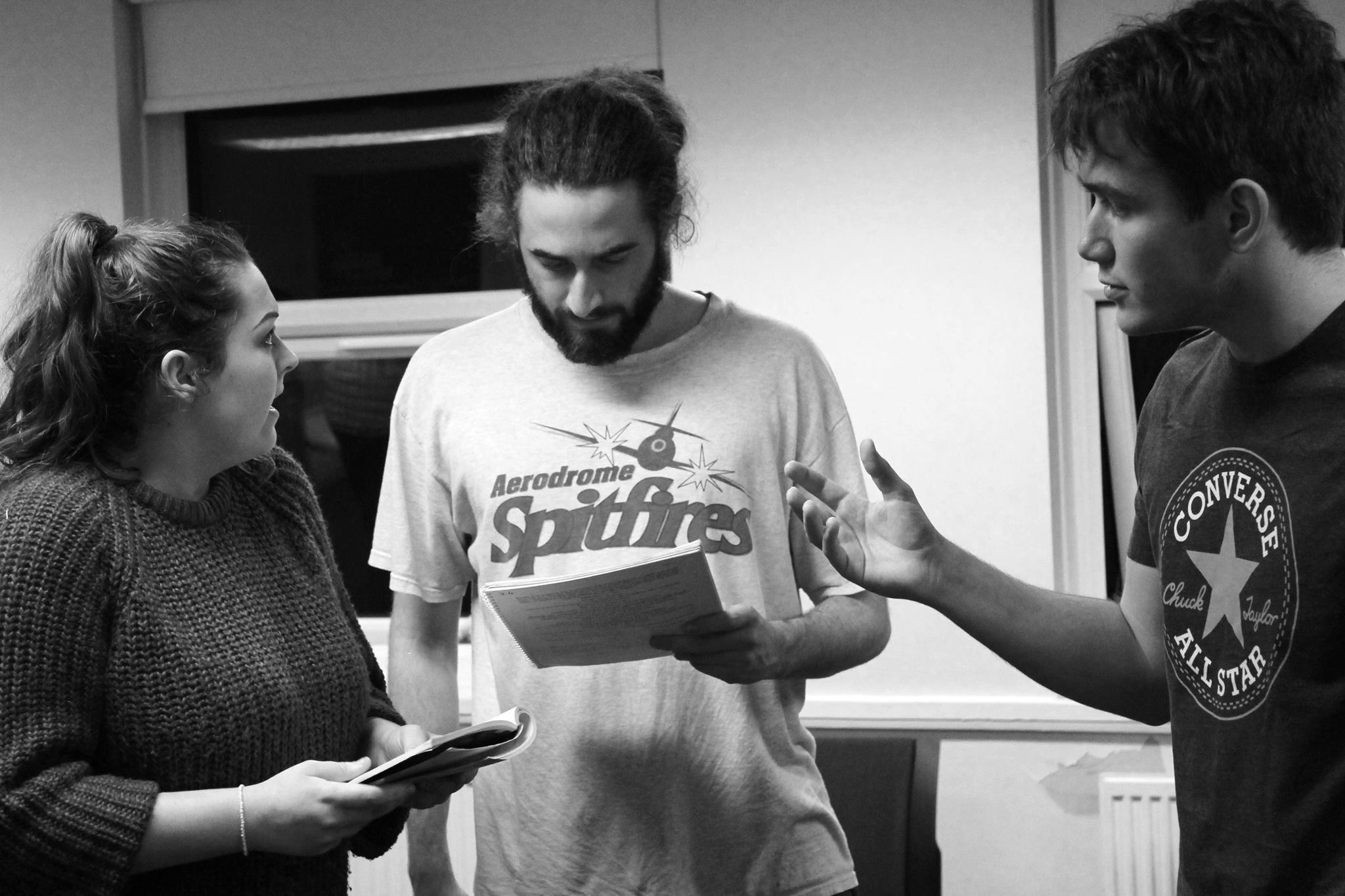
The Crucible was written by Arthur Miller in the 1950s as a comment on mass hysteria and the dangers of false accusation and is based on true events. Drama Society attempted to transport us to the small and suffocating town of Salem, Massachusetts where Miller’s plot of witchery and paranoia takes place – and it did not disappoint.
Before it even begins, Tom Williams’ direction sets the erie tone with Tituba, played by Anna Tamela, on stage as the audience file in singing a quiet tune and mixing what we can only assume is a witch’s brew. Act One begins with ‘the girls’ emotive interpretive movement piece to Hozier’s Arsonist’s Lullaby setting the scene perfectly. The hysteria and screams start early and continually make several appearances, intensifying as they go on and effective in startling the audience throughout.
The ‘children’, as they are often referred, have a difficult role in The Crucible but their moments of manipulation and hysteria managed to breathe life into every scene they were in. From the outset Ellie Cozens stunned with her controlled intensity, giving a perfect vulnerability to the role of Abigail Williams which is too often portrayed as a simple villain. Her northern accent was flawless and was a great move by Williams in symbolising how much of an outsider Abigail is in the village in comparison to the rest of the cast’s RP accents. Emma Halahan’s portrayal of Mary Warren was hysterical – and not in a funny way. With a character seemingly constantly on the verge of breakdown, her performance was extremely raw and powerful.

There was a standout performance from Emil Rousseau in the role of Reverend Hale, whose soft-spoken demeanour perfectly contrasted Reverend Parris’s (Jack Fairhurst) aggression and wild character. Rousseau handled the vast character arc of Reverend Hale with grace and emotional intensity, taking the audience with him on a difficult moral journey through all four acts. The same can be said of the contrast between Thomas Putnam (Josh Berrington) and Francis Nurse (Gez Downing), enemies within the play furthered by their similar contrasting characterisations, a testament to both actors’ choices in the rehearsal process.
Every character placed at the centre of the action was as important as those at the periphery. It was intriguing to see how the background characters interacted and their well timed reactions to events complimented the hefty monologues given by more prominent characters. Special mentions must be given to characters Rebecca Nurse (Sorrel Wilson), Betty Parris (Eloise Quinn-Valentine), Giles Corey (Tomas Van Den Heuvel), Ann Putnam (Amber Lickerish) and Ezekial Cheever (Matthew Rainsberry) for their roles in creating the tense Salem on stage through carefully picked background interactions.

John and Elizabeth Proctor, played by Jack Read and Olivia Dutson respectively, handled the volatile and difficult marriage they were tasked with portraying with great sensitivity and nuance. Dutson’s cold Elizabeth juxtaposed against a fiery performance from Reade worked remarkably well and it was genuinely warming to see their transformation into Act 4.
The conceptualisation of a ‘timeless’ piece from Director Tom Williams was somewhat difficult to see at points but it did allow for the contextual theme of McCarthyism to come through with the introduction of Deputy-Governor Danforth (Tom Knight). Danforth’s over-zealous ambition in putting people in jail for their crimes comes across easily when Knight would sometimes jump his cue on purpose. The court created by Knight and Rosa Higgs’ Judge Hathorne was incredibly menacing and a great tribute to Miller’s court-heavy Acts 3 & 4. It worked well to put forward his intensity in justice and it was equally damning of the characters when he said his last line: “whoever weeps for these people weeps for corruption”.
The lighting scheme was also a point of conceptual contention as it was often far more stylised than the naturalistic performance that the cast gave. While, on occasion, the cold lighting did work with the hysterical nature of the scene, the bright reds, yellows and greens, all at once was often at odds with the scene itself, although technical cues were near perfect for an opening night.

The condemnation of almost every character by the end of the play is poignant in terms of the paranoid and accusatory nature that Miller is trying to showcase. Accompanied with the heart-pounding ‘sound of drums’, it is a dramatic ending and cannot be described without having seen the character’s very real expressions and portrayals in person.
Director Tom Williams said that he was very proud of the cast and was pleased that the first night went so well, as “they absolutely deserve it”. All in all, I thought that the performance was beautiful and I would be eager to see it again. I would recommend it to anyone and everyone as it really is something to see for yourself. The show is on until Tuesday November 21, with tickets available from the SU website: https://www.su.rhul.ac.uk/events/
